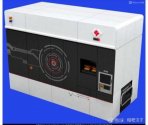China's top maker of memory chips plans to double output in 2021
TAIPEI -- Top Chinese memory chip maker Yangtze Memory Technologies plans to double its output this year and start producing advanced chips rivaling those from Samsung and other global leaders, Nikkei Asia has learned.
Yangtze's targets, if achieved, would be the most important step forward in recent years for China's ambitions to create a full-fledged domestic semiconductor supply chain. NAND is a crucial component for memory and storage used in almost all computing devices, from smartphones and PCs to servers and connected cars, but production is controlled by just a handful of global players.
The Wuhan-based national champion plans to double its monthly output of memory chips to 100,000 wafers -- around 7% of total global output -- by the second half of 2021, two people with knowledge of the matter told Nikkei. This would help the young company, which was founded in 2016, narrow its gap with market leaders. Samsung Electronics, the world's biggest maker of NAND flash memory chips, produces around 480,000 wafers a month, while Micron, the biggest U.S. player in memory chips, churns out about 180,000 per month.
In addition to ramping up output of current chips, Yangtze Memory is also accelerating its technology development with an eye toward challenging Samsung and other global leaders, including Japan's Kioxia, South Korea's SK Hynix and Micron.
The Beijing-backed chipmaker is set to put the country's first batch of 192-layer 3D NAND flash memory chips into trial production as early as mid-2021, sources briefed on the matter said. The company currently produces 64- and 128-layer chips. It is more cost-effective to have chips with more layers, but they are also more challenging to develop and produce.
This plan could be delayed until the second half of the year, as it takes time to ensure quality when mass-producing such chips, but even that timetable would mark a major step forward for a homegrown Chinese chipmaker, the sources added.
Top-tier players like Samsung and Micron are still working to develop 176-layer 3D NAND flash chips. The most cutting-edge versions being mass-produced have 128 layers.
Yangtze Memory's planned 192-layer chips are, by definition, more advanced than those being developed by Samsung and Micron, but market watchers are cautious, saying it remains to be seen whether the Chinese company's chips will boast the performance and quality needed to surpass the market leaders.
"For the production increase part, the company has been busy moving in and setting up all the necessary chip equipment and expanding production lines since the third quarter of 2020," one of the sources said. "It currently produces a mix of 64-layer and 128-layer 3D NAND flash memory chips but will gradually devote more capacity to the latter."
Yangtze Memory began mass-producing 128-layer of NAND flash memory chips at the end of last year, after
that it had completed development for such chips.
"The yield rate [for 128-layer chips] is around 70% currently and still has room for improvement," one source said. Yield rate refers to production performance and quality.
"It's already a major breakthrough, but [Yangtze Memory] still needs a lot of business engagement and to wait for top-tier global customers to recognize and adopt its NAND flash chips," another executive in the chip industry told Nikkei.
Yangtze Memory's clients include China's Lenovo Group and also Huawei, which uses its products in its base stations, one of the sources said. Yangtze Memory also introduced its first consumer-grade solid-state storage drive, dubbed Zhitai, last year.
The company has already shaken up the market for NAND flash memory. When Intel sold its NAND flash memory business to SK Hynix in 2020, some market watchers viewed the move as an attempt by the U.S. chipmaker to avoid fierce competition expected from the Chinese chipmaker.
Yangtze Memory has also given China's ambitions to build a viable semiconductor industry a major boost. Before Yangtze Memory, China had no homegrown chipmaker capable of producing 3D NAND flash memory. Its success -- starting with production of 64-layer chips in 2019 -- has helped the nation
on foreign-made memory chips.
This breakthrough, however, came as the U.S. placed China's top chipmaker, Semiconductor Manufacturing International Corp., on a trade blacklist to restrict its access to American technologies. Washington cited alleged links to the Chinese military, something the contract chipmaker has repeatedly denied. Both SMIC and Yangtze Memory still rely on U.S. chip equipment, design tools and materials, though they have started
to reduce their reliance on American technology.
The first phase of Yangtze Memory's $24 billion plant in Wuhan, which is already in use, is being expanded to reach the target of 100,000 wafers per month. Construction on the plant's second phase, which will be able to churn out a further 200,000 wafers each month, began last June. The facility managed to stay open
despite being located at the epicenter of the outbreak.
The company has also worked hard to shield itself from the Washington-Beijing tech battle. It introduced its own Xtacking technology -- a fundamental structure for building 3D NAND flash memory -- at the annual Flash Memory Summit in 2018 to prove to the world that it could innovate.
Company CEO Simon Yang told an industry forum the same year that his company is not a "copycat" and reassured other players that it did not intend to
in the market.
Though Yangtze Memory is an affiliate of Tsinghua Unigroup, which is facing a serious debt problem, it continues to enjoy strong state support. It received funds from the first and second phases of the China Integrated Circuit Industry Investment Fund, the so-called Big Fund, the country's most important chip funding program. Multiple sources say Yangtze Memory will not be affected by Tsinghua Unigroup's financial woes, even though other affiliates have faced
.
Yangtze Memory did not respond to Nikkei's request for comment.
Nikkei staff writer Lauly Li contributed to the report.

